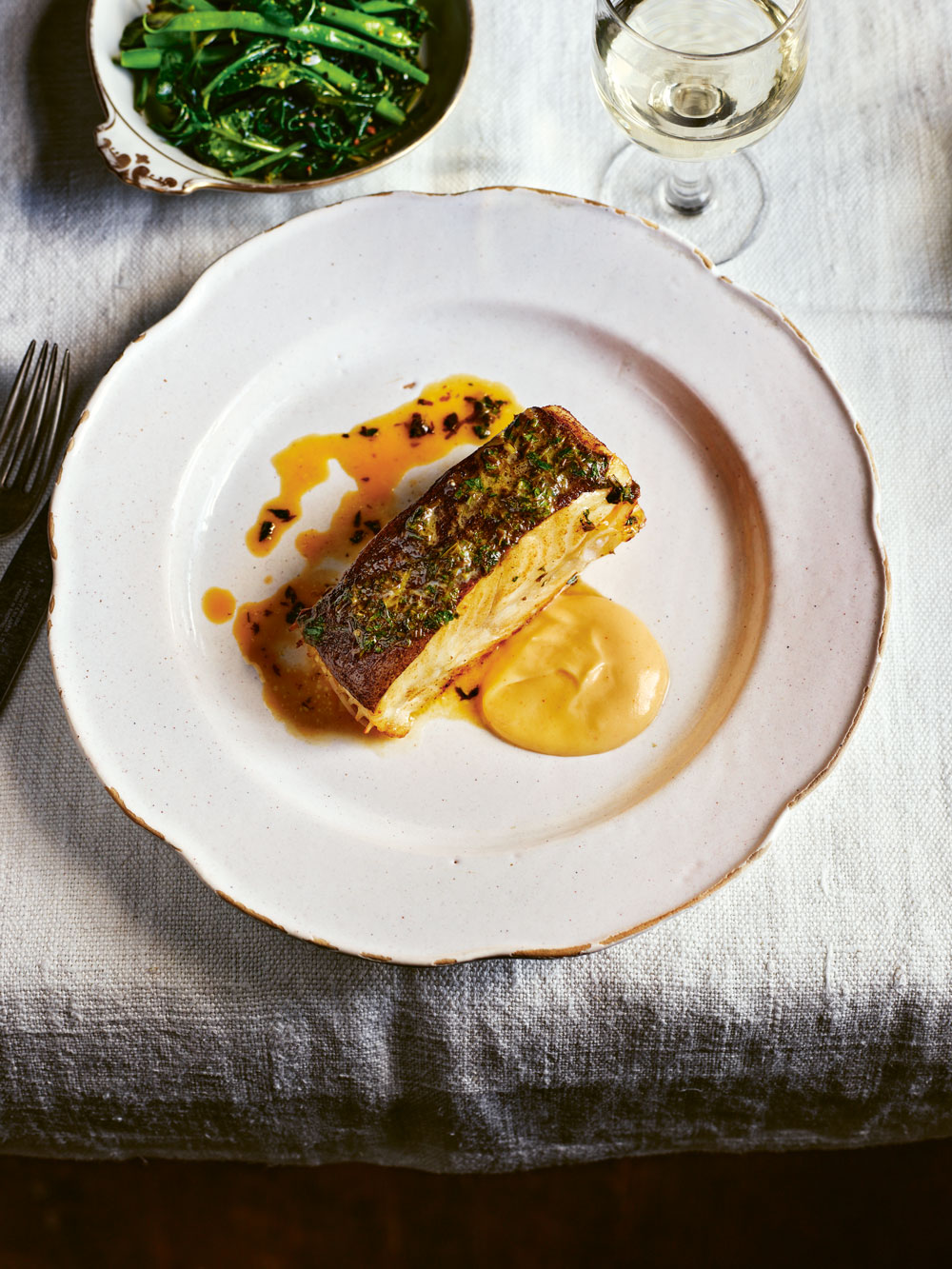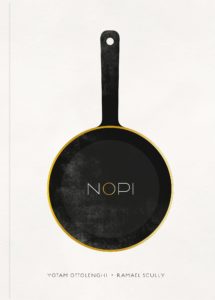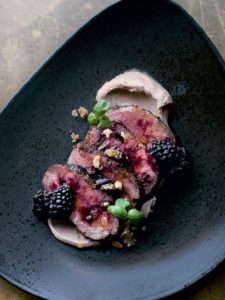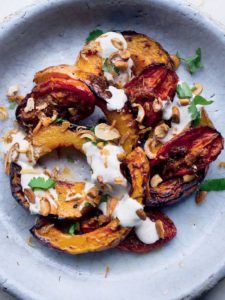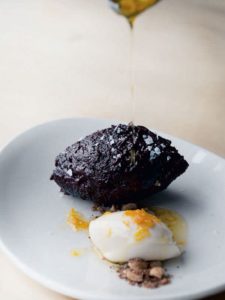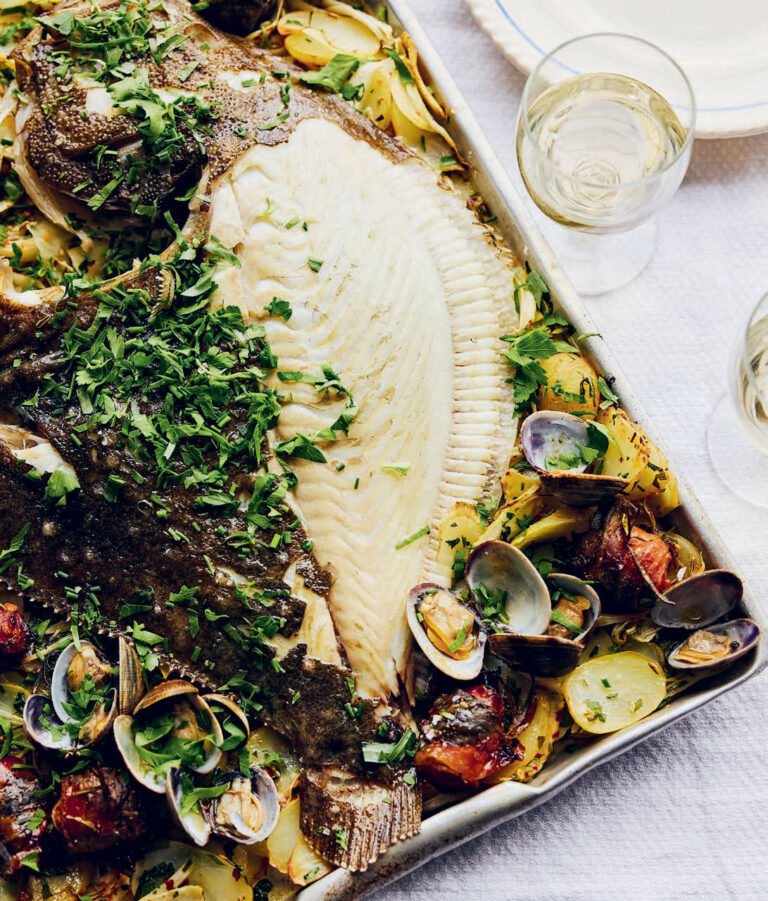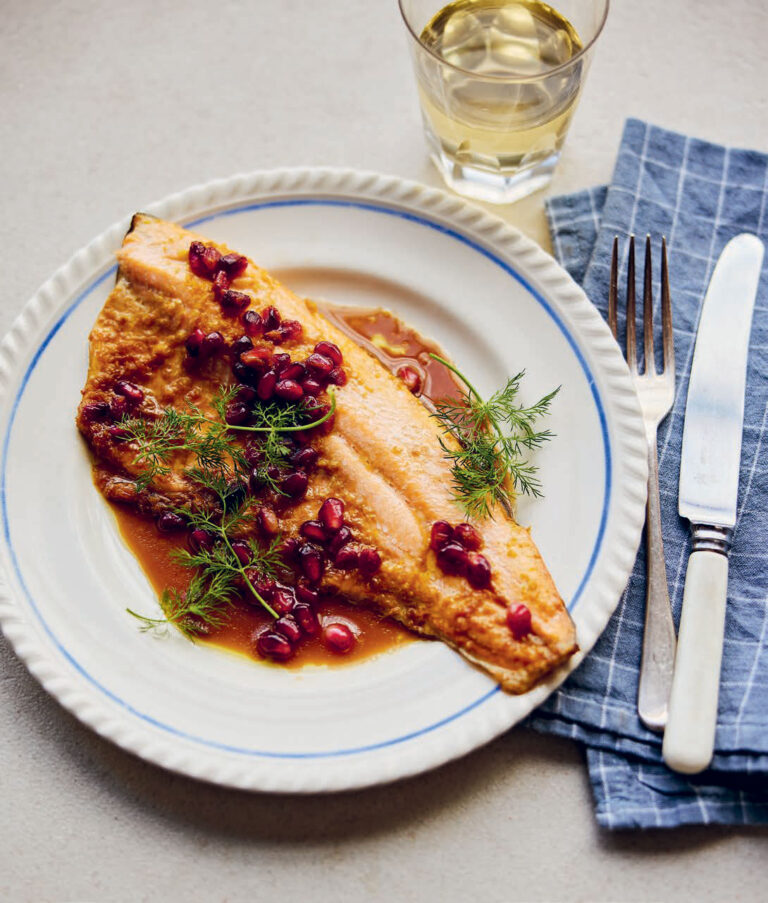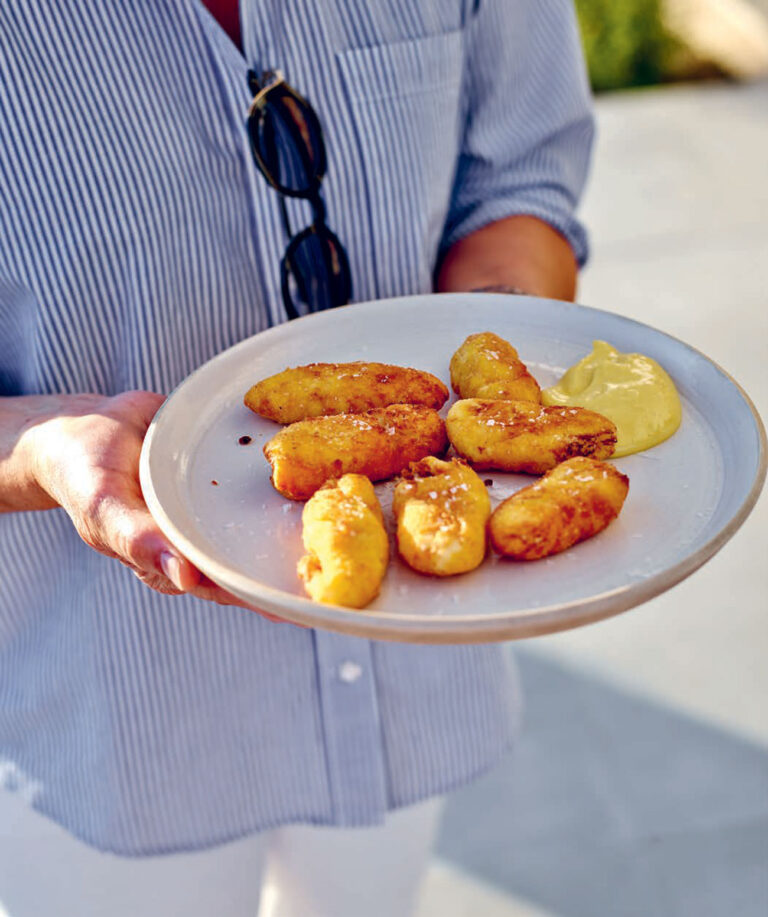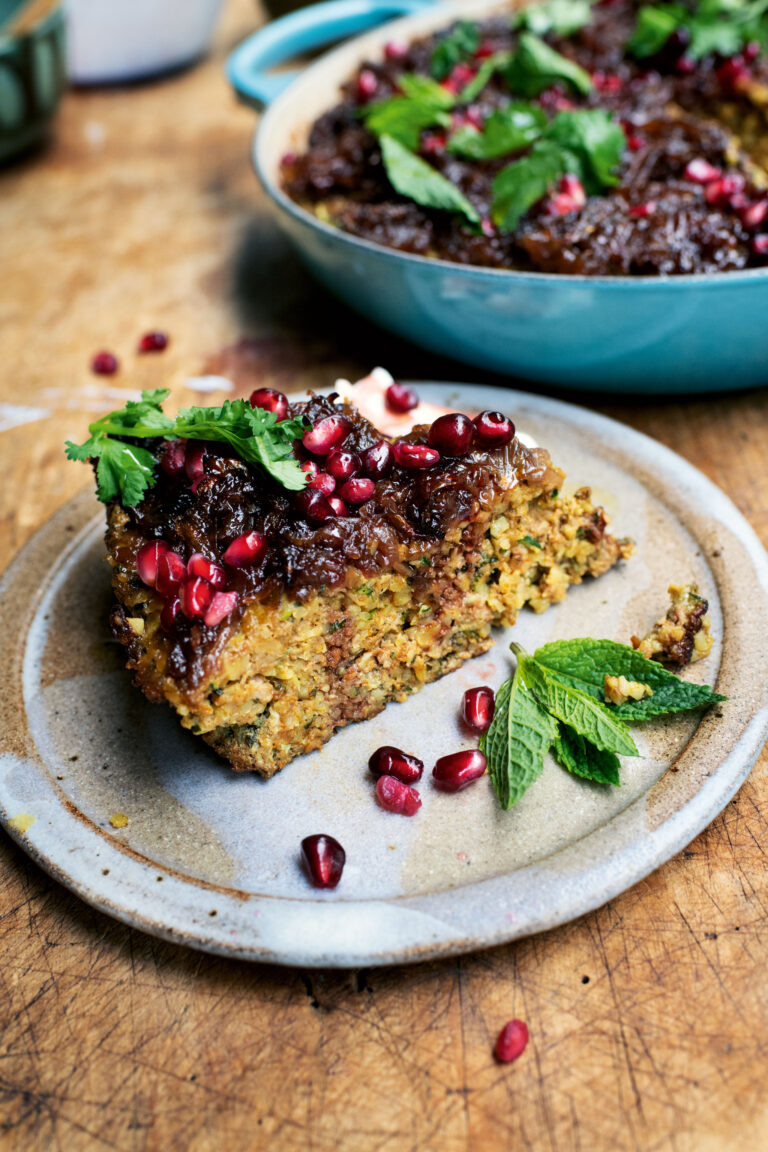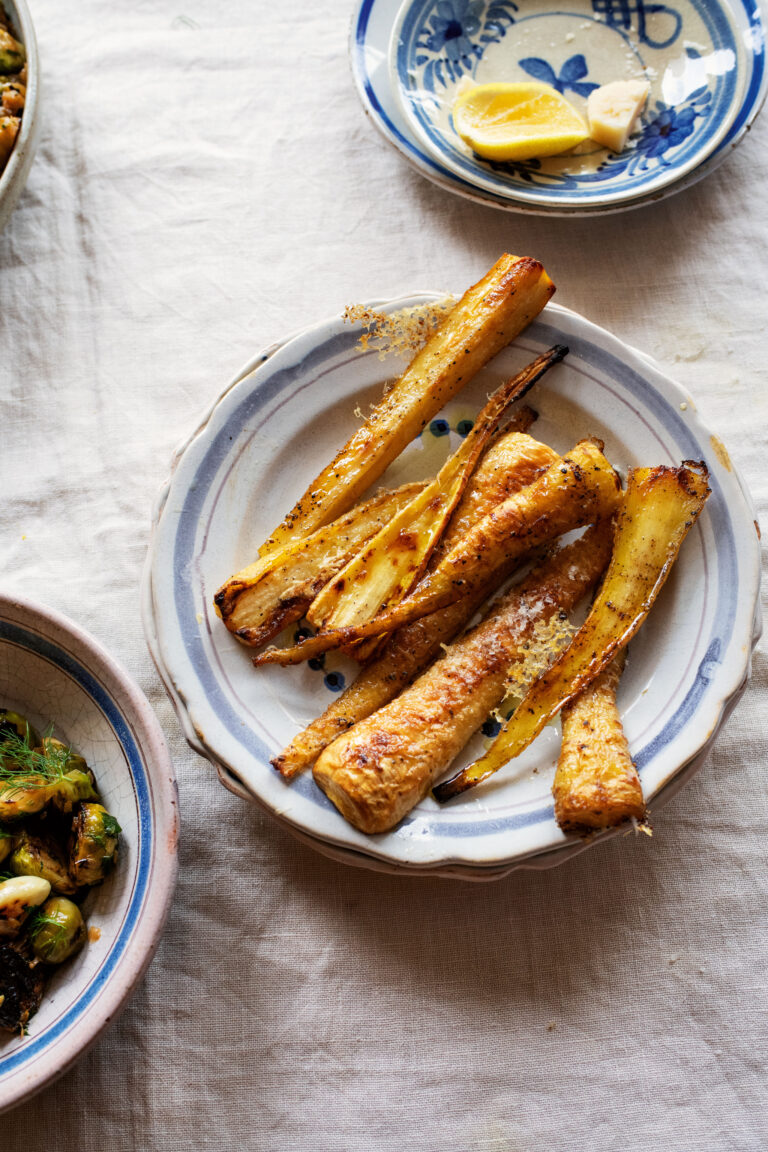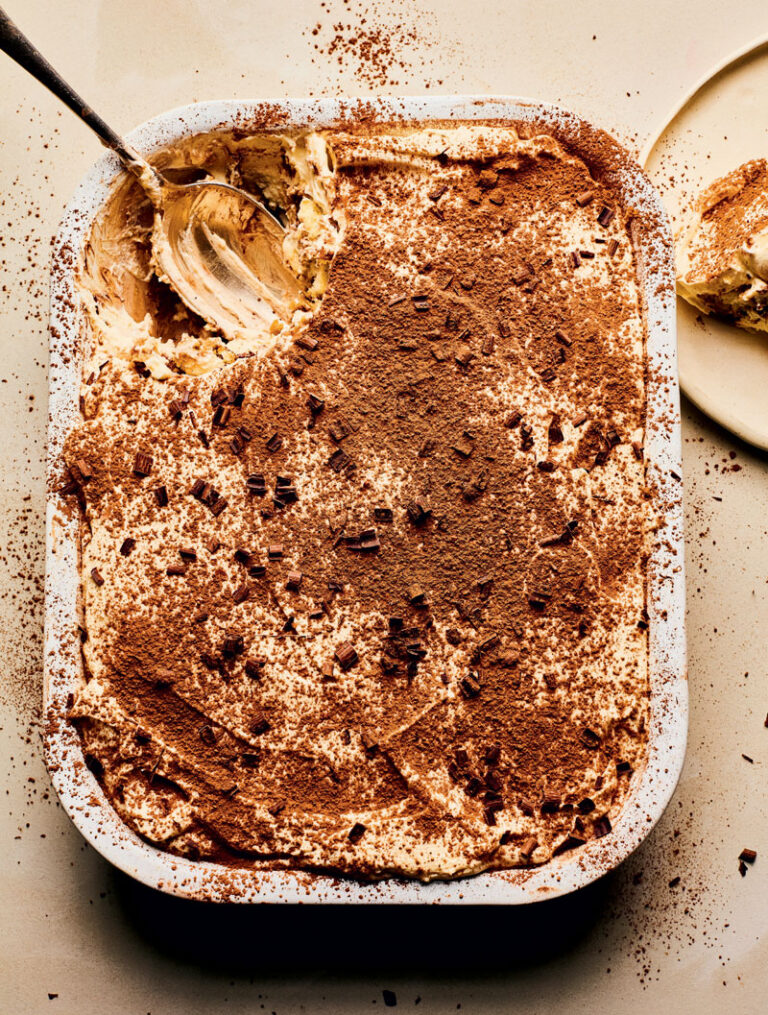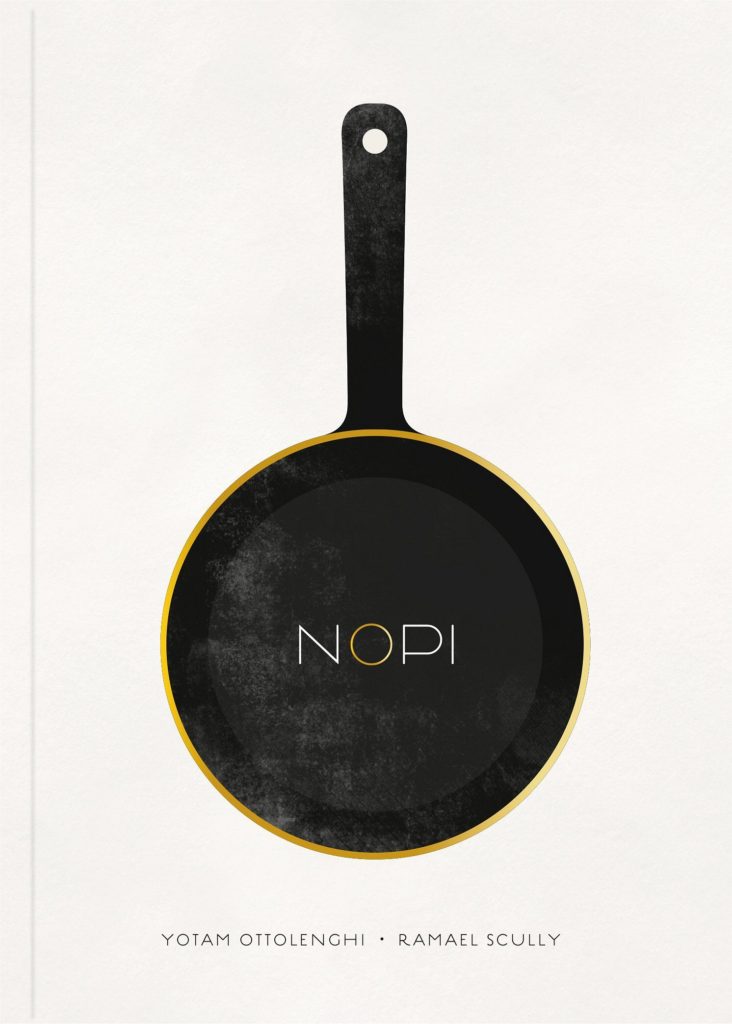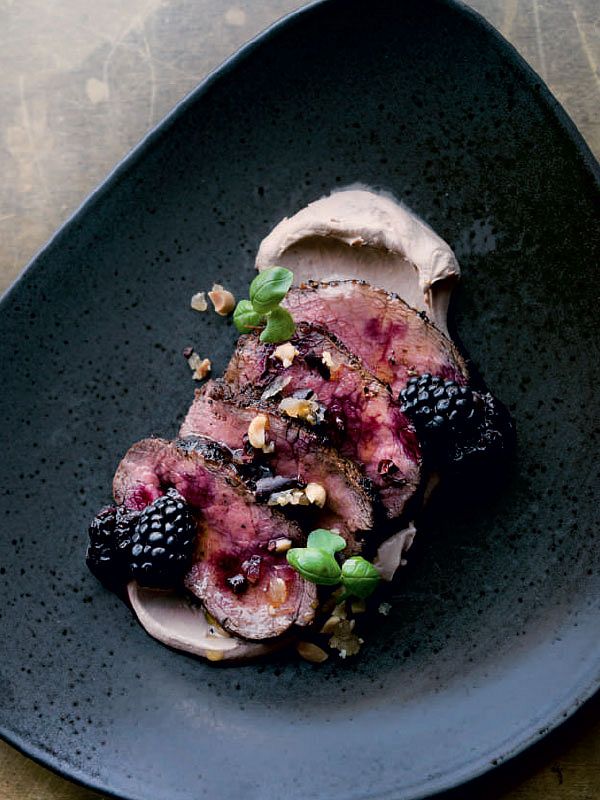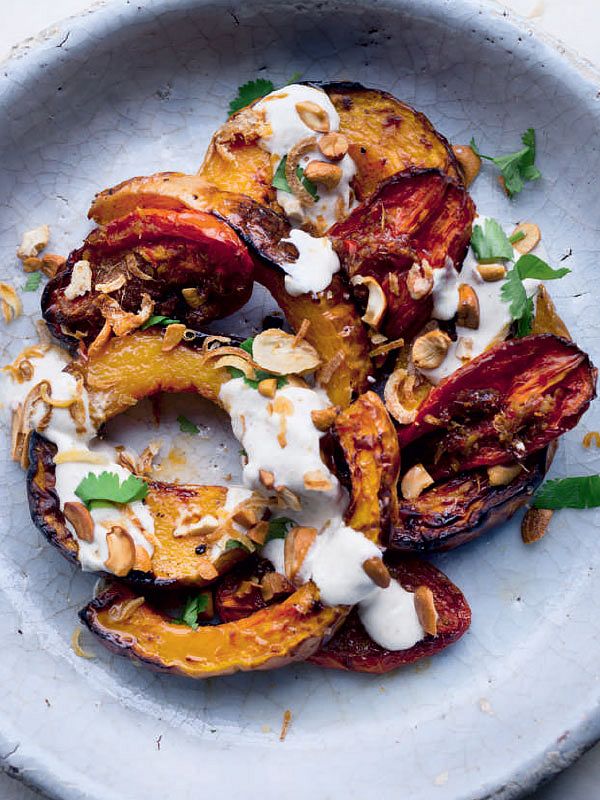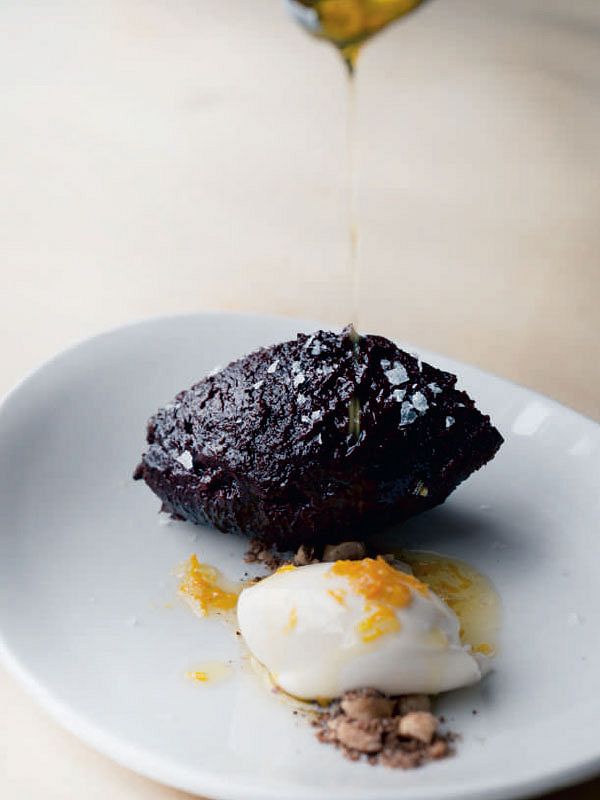Ottolenghi’s Sea Bass and Turmeric Potatoes in Rasam Broth
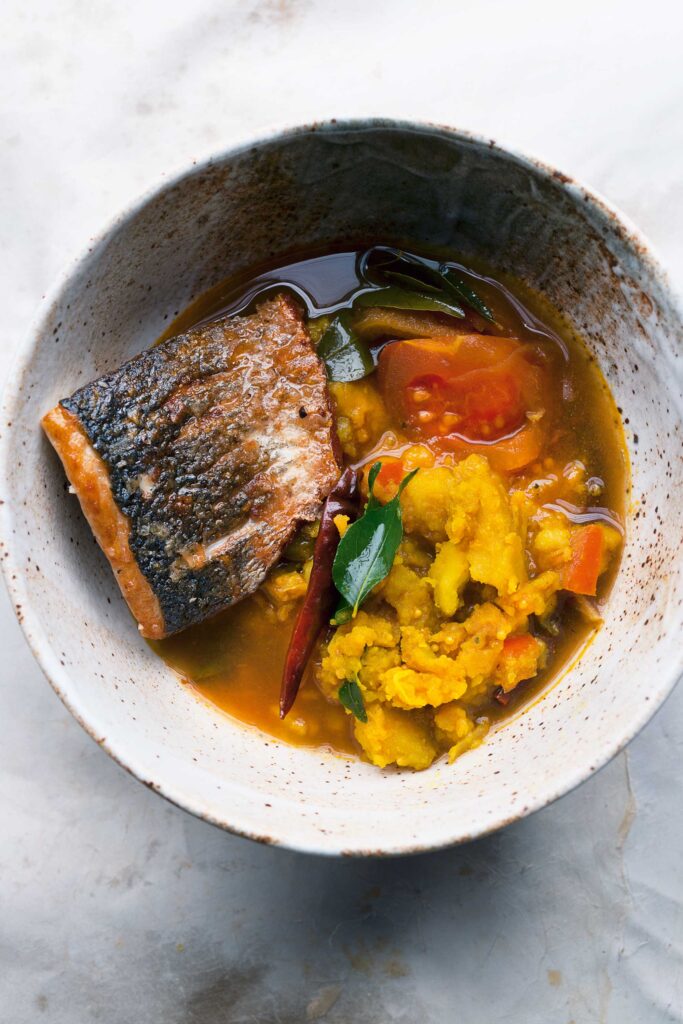
Light and warming, this Ottolenghi dish of sea bass and turmeric potatoes in rasam broth features bold tamarind, garlic and fragrant spices.
From the book
Buy From
Introduction
Tamarind is one of our favourite ingredients. Its taste is hard to describe – it has a sweet-sour flavour that adds a completely distinct tartness to sauces, soups, marinades, pastes and dressings. It’s an ingredient we use lots throughout the book in a number of savoury fish and vegetarian dishes, as well in the sweet dish of Roasted pineapple (page 260 of NOPI).
Here, its tartness is a key part of the rasam soup which is often served in South Indian cooking to balance the heat of other dishes. Rasam translates as ‘essence’. The soup can be made in many ways – with varying contributions from tomato, pepper, lemon, cumin, chilli and tamarind water – but the result will always be food that comforts and restores. As with the Halibut and vichyssoise (page 118 of NOPI), our version is a meal in itself, somewhere between a hearty soup and a fish dish with a sauce.
We use five different spices when making rasam at NOPI, instead of the garam masala mix here. If you want to reinstate the original, use 1 teaspoon each of black pepper, cumin, coriander, caraway and yellow mustard seeds.
Ingredients
| 30g | ghee |
| 6 | sea bass fillets (840g), skin lightly scored |
| 1 tbsp | lemon juice |
| 10g | coriander leaves (optional) |
| coarse sea salt and black pepper | |
| For the potatoes: | |
|---|---|
| 620g | Desiree potatoes (or a firm waxy variety), peeled and cut into 2½cm cubes) |
| 15g | ghee |
| 8 | stems fresh curry leaves (20g) |
| 1½ tbsp | yellow mustard seeds |
| 1 (100g) | medium onion, finely diced |
| 4 | garlic cloves, finely diced |
| 1 tsp | ground turmeric |
| 2 medium (170g) | tomatoes, halved, seeds removed and roughly chopped (100g) |
| 10g | unsalted butter |
| For the rasam: | |
| 100g | tamarind pulp |
| 1 tbsp | sunflower oil |
| 2 medium (200g) | onions, thinly sliced |
| 8 | garlic cloves, crushed |
| 1½ tbsp | garam masala |
| 12 stems (25g) | fresh curry leaves |
| 2 large | dried red chillies |
| 3 large (300g) | each cut into 6 wedges, 2cm wide |
Method
Place the potatoes in a medium saucepan and cover with salted water. Bring to the boil, then reduce the heat to medium and simmer for 10 minutes, until just cooked. Drain and set aside.
Wipe the pan dry and return it to a medium heat with the 15g of ghee. When melted, add the 8 stems of curry leaves and mustard seeds and fry for 2 minutes, until fragrant. Add the onion and garlic and fry for another 3 or 4 minutes, until starting to soften. Add the turmeric, tomatoes and cooked potatoes, stir to coat the potatoes with the spices, then cook for a minute or so before adding the butter, 1 teaspoon of salt and a good grind of black pepper. Cook for a final minute, then set aside and just warm up when you need it.
To make the rasam, pour 900ml of boiling water over the tamarind and set aside for 30 minutes, for the pulp to soften and disintegrate in the water. Use your hands to break up and dissolve the pulp, then strain through a fine mesh sieve and discard the seeds. Put the sunflower oil into a large pot and place on a medium heat. Add the onions and garlic and fry for 4–5 minutes, stirring from time to time, until starting to soften. Add the garam masala, 12 stems of curry leaves and chillies and fry for another minute before adding the tomatoes. Pour over the tamarind water, reduce the heat to medium-low and simmer very gently for 15 minutes; take care that it does not come to the boil, as this will cause the tamarind pulp to split. Add 2 teaspoons of salt, stir through and set aside. You can leave this to infuse for a few hours and then, when ready to serve, there are two options. For a more formal look, strain the rasam for a clear broth; for a more rustic and informal look, you can skip the straining and keep the onion, garlic, curry leaves and chillies in the pot. Either way, you’ll need to return it to the stove and warm it through before serving.
To cook the fish, place a large frying pan on a medium heat and add the ghee. Use 1½ teaspoons of salt to sprinkle over the skin side of all 6 fish, along with a grind of black pepper. When the ghee has melted, add the fish to the pan, skin-side down: you might need to do this in two batches so as not to overcrowd the pan. Fry for 3–4 minutes, until crisp and golden-brown. Use another 1½ teaspoons of salt to sprinkle on the flesh side of the fish, along with some more black pepper, then flip the fish over and cook for a final minute. Remove from the heat and drizzle with the lemon juice.
To serve, spoon the warm potatoes into a bowl. Place a fish on top or alongside, skin-side up, and ladle over the rasam. Finish with a sprinkle of coriander, if using, and serve.
Reviews
Have you tried this recipe? Let us know how it went by leaving a comment below.
Our team is taking a break over Christmas and may be slower to respond to your comments or queries. We apologise for any inconvenience this may cause.
Please note: Moderation is enabled and may delay your comment being posted. There is no need to resubmit your comment. By posting a comment you are agreeing to the website Terms of Use.

